It all starts with months of summer research and a concept. At least that’s how senior fashion design students at Jefferson approach the beginnings of their senior capstone classes, called “Collection”. After three years of learning how to sketch, sew, drape, and draft patterns, these senior students are ready to explore their sources of inspiration and create a collection that is all their own.
All senior students at Jefferson complete capstone classes their senior year. These are special classes specific to each major that require students to utilize all of the skills acquired over the course of their studies to create a presentation showcasing their abilities. For senior fashion design students, capstone comes in the form of two separate collection classes. These classes occur consecutively in the fall and the spring semesters.
While students at other fashion schools also produce capstone collections, Jefferson is the only school to split collection into two separate sections. Senior students at other schools spend both semesters working on one collection. At Jefferson, splitting the collection capstone into two separate projects allows students the opportunity to explore different sources of inspiration. Students may also choose to focus on a different customer from one collection to the next. For example, a senior fashion design student at Jefferson might explore women’s’ evening-wear inspired by deep sea marine life for their first collection and men’s’ active-wear inspired by a recent trip for their second collection. This splitting of the capstone also allows students to showcase their flexibility and multiple talents.
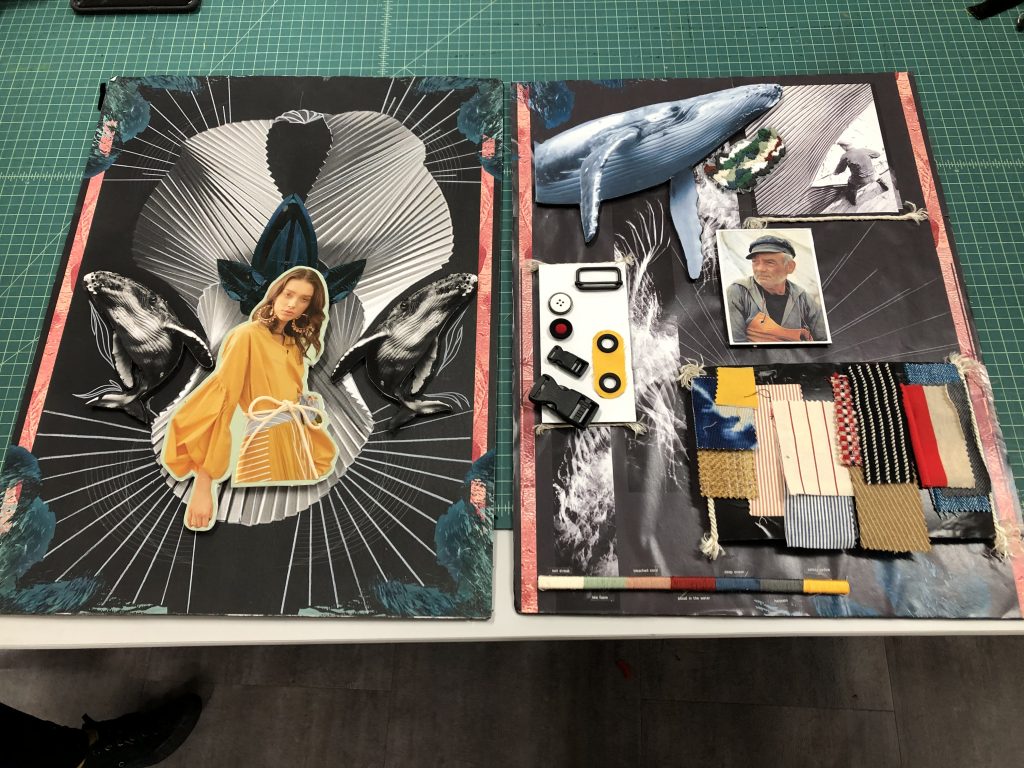
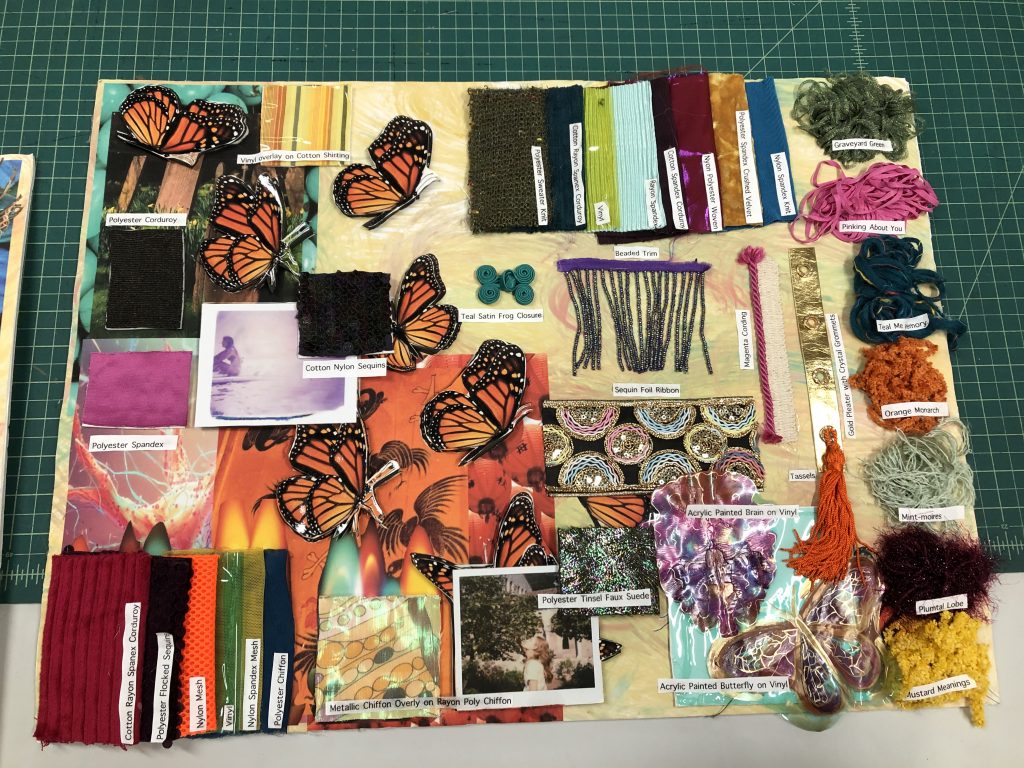
Concept
Every capstone collection begins with a concept. However, how students get to their concepts can be entirely different. As collection professor Katie Casano puts it, concepts should be “multi-faceted” and “convey a unique point of view”. For example, senior fashion design student Sierra Greenberg began her inspiration with the human brain. From there, she started to think about mortality, and the different beliefs and practices around death in other cultures. Her collection utilizes recycled garments in the form of donations from family and friends with recently deceased loved ones. By combining all of these ideas, she has developed a larger concept of re-purposing the garments of the deceased as a means to celebrate their life. She also creates something special for family members and loved ones to cherish.
Another senior fashion design student, Robin Skodi, takes a more visual approach to her first collection concept. The increase in whaling in the oceans is something that is of grave concern to Robin. She spent a few weeks this summer doing extensive research into the whaling occupation and its effects on marine life. “I think it’s more impactful when the concept focuses on a social message,” Robin explains when asked about her concept. While educating herself about whales, Robin became inspired by the abstract linear markings found on the underbellies of these animals. In fact, this type of repetition reminded her of stroboscopic photography. Stroboscopic photography utilizes strobe lights flashing in rapid succession and a subject in motion in front of a stationary camera with an open shutter. The result is a photo that shows successive movement. To Robin, these types of photos gave off a type of organic repetition that mimicked the linear effect on the whales’ bellies. She used her sketchbook to experiment with these linear patterns, recreating them using various materials to inform her collection.

Sketching and Material Sourcing
Students’ sketchbooks house more than just photo clippings and sketches. In many cases, students will include 3D elements in sketchbooks, such as fabric manipulations and embellishment direction. At this stage in the process, designers should also be thinking about fabrication and practice draping some looks to inform silhouette direction. Students go to New York City, as well as some local fabric resources, to gather supplies and inspiration. Sometimes, more personal touches contribute to the success of collections, such as hand dyed or painted fabrics and intricate trims and beading. For her first collection, Robin manipulated textured vinyl, stitching abstract linear patterns into the fabric to create patterns similar to those seen on whale underbellies. In some cases, custom fabrics are even designed for use in senior collections.
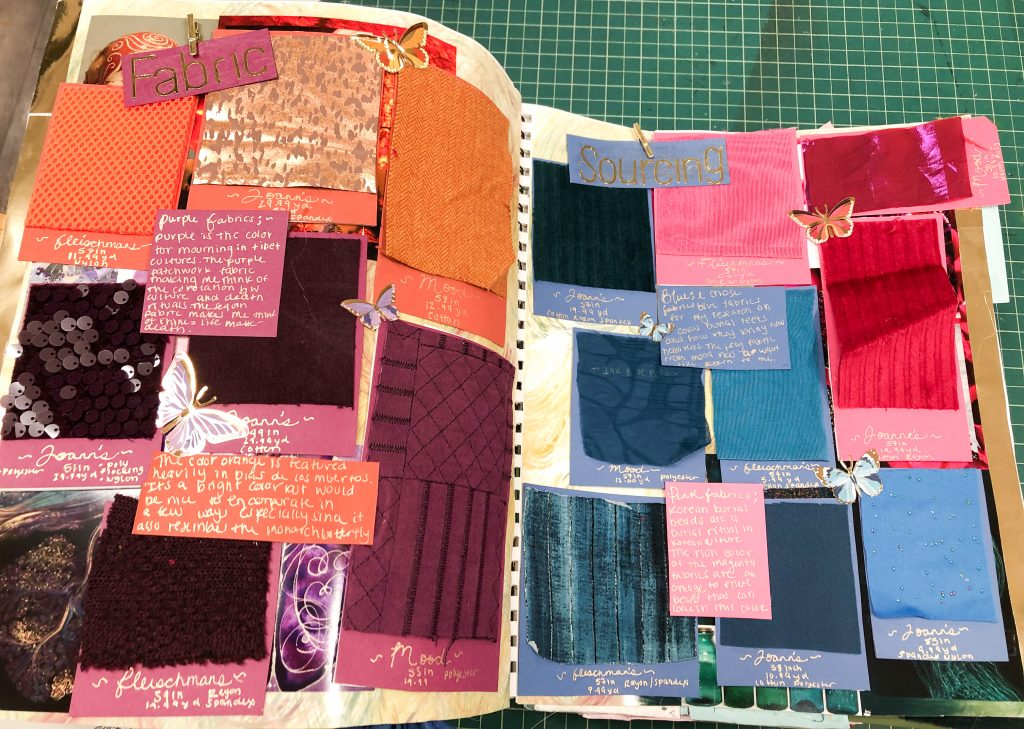
Collaboration
Something that is also unique to the Jefferson fashion design experience is access to the textile department. Students may decide to collaborate with textile design students to create custom fabrics or prints for their collection. Other fashion design senior students use their own CAD skills to create prints, and utilize the fabric printing lab on campus to digitally print their fabrics. Often, it is sketchbook research and exploration that leads to the inspiration for textile and print collaborations. Sierra Greenberg collaborated with textile design student Nick Hammerschmidt to create custom prints for her collection. Through her research, she discovered butterflies symbolize life or the soul in many religions and cultures. Using this image as inspiration, her textile collaborator used bright colors and intricate patterns found in butterfly wings to create a unique print that serves as a celebration of life.
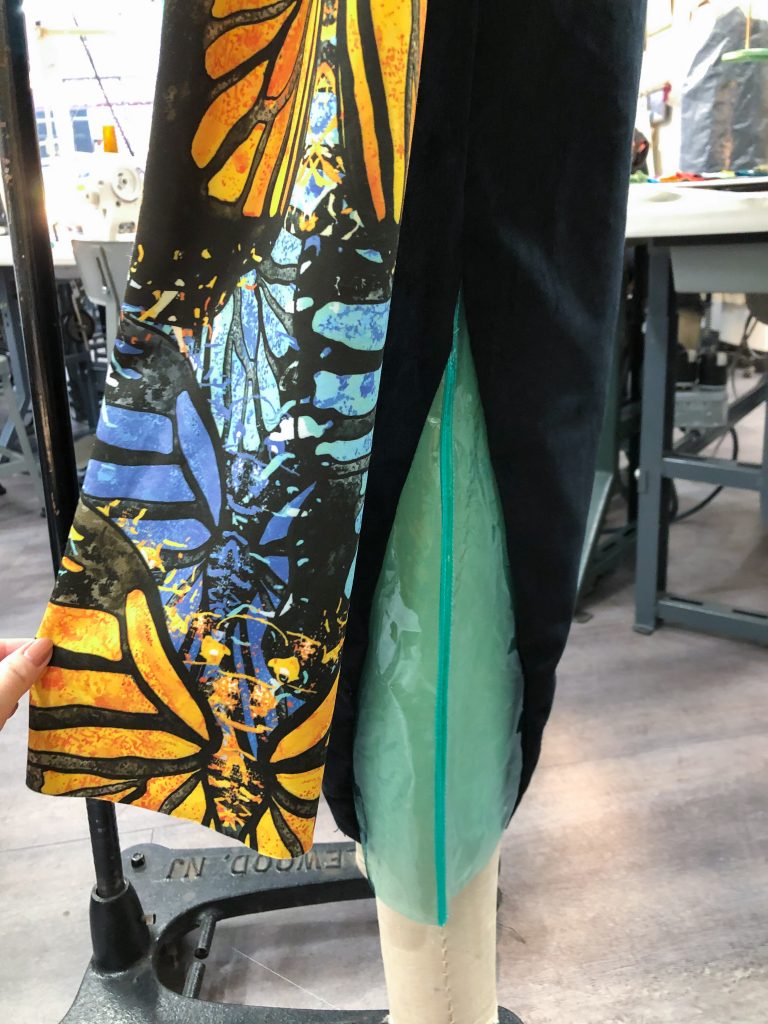
Collection Construction
With textile collaborations underway and a plethora of clothing ideas synthesized through sketchbook research, designers are now ready to start designing their collections. Keeping in mind the target customer and the aesthetic that customer values, designers complete a merchandising project. During this process, students identify their top five looks. Students sketch and render each look in full color and review their looks with fashion design faculty and guest critics. This exercise not only allows students to gather feedback on their designs, but also to interact with industry professionals. These professionals offer advice and insights into how fashion companies approach collection development.
Designers must now translate their sketches and ideas into actual garments. Students do this by draping, patternmaking, and fitting each piece in a look. After creating the pattern, designers sew a fit sample, called a muslin, and begin fitting on their models. This sometimes take designers a little while to perfect, as small changes in the fit of a garment may have major impacts on how it is constructed. Sometimes the fitting process forces designers to problem solve solutions to unexpected issues.
Once designers are happy with the fit of their muslins, they are ready to start cutting final fabric and constructing. While students design a 10-piece collection for each collection capstone class, they are only required to construct a minimum of three of these looks. However, students still fully illustrate and render all ten looks, specifying how the garments would be constructed were someone to try to sew them. The entire collection and all of the research behind it makes for a very strong portfolio tool once students graduate.
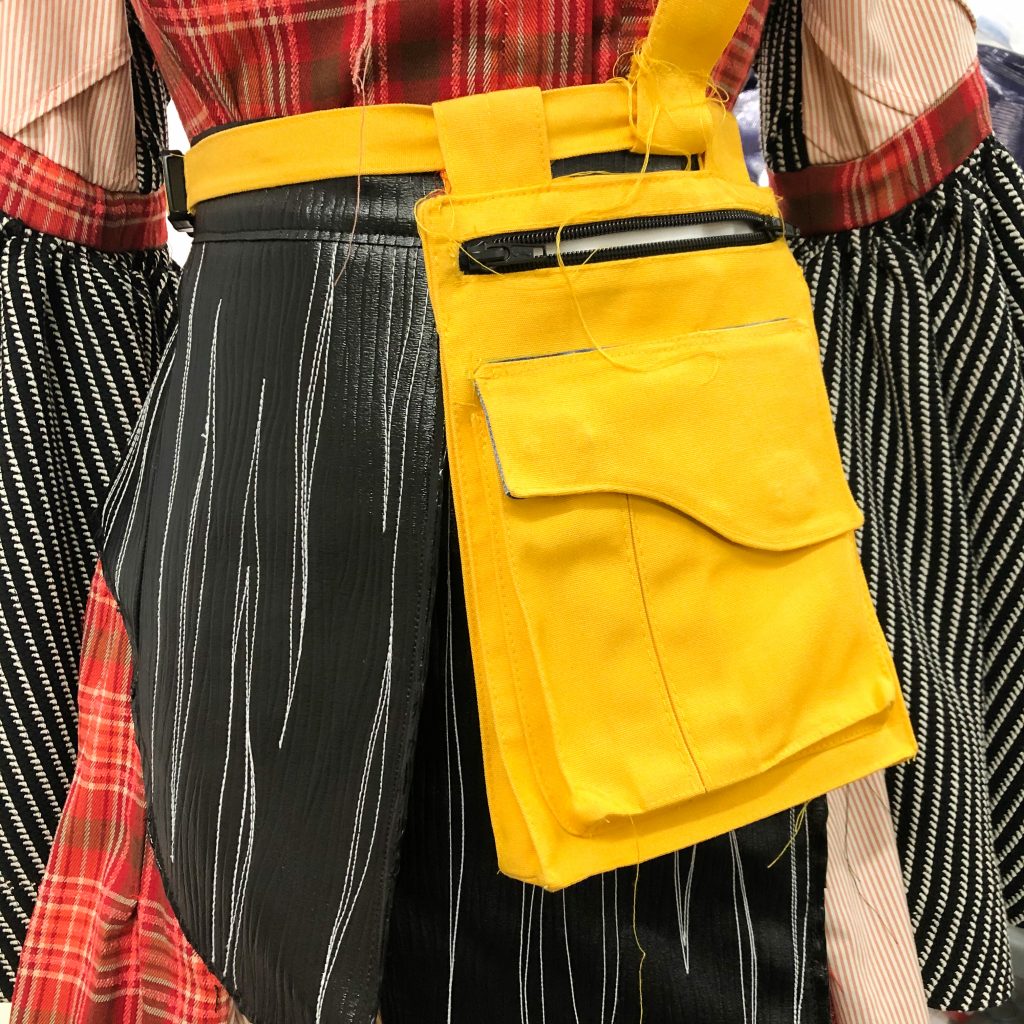
Critiques
As with all fashion design projects in the program, students present their collections in critiques. Senior critiques tend to draw the biggest crowd, as underclassmen are encouraged to attend to prepare them for the future. For the most part, the entire senior fashion design class as well as all fashion design faculty attend these critique. Faculty often invite industry professionals to join the panel of guest critics. Here, the designers present their concept and collection alongside models dressed in the looks they constructed. Faculty, students, and industry professionals alike are all encouraged to critique the student’s work and give some constructive feedback.
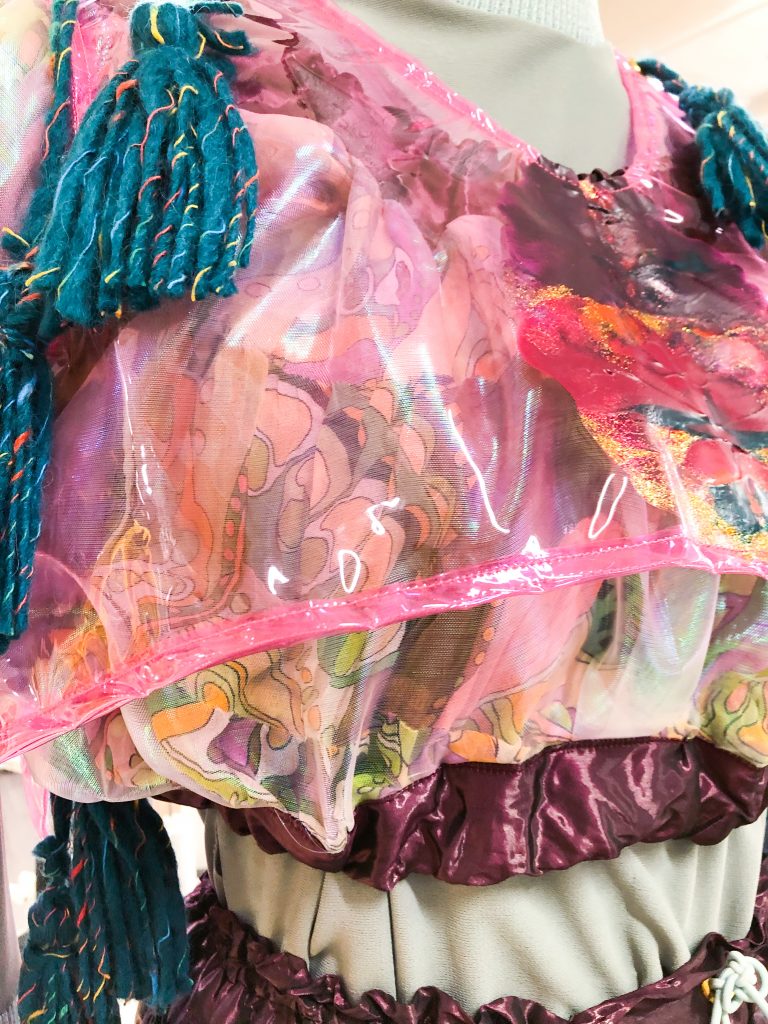
Fashion Shows and Special Opportunities
At most other fashion design schools, this is where the journey ends. However, at Jefferson University we have the unique opportunity to highlight two senior collections each semester at a special Emerging Designers fashion show at New York Fashion Week. The entire fashion design faculty votes to determine which collections will be shown. The winning designers travel to New York to watch their collections walk the runway. For many students, having their collections shown at fashion week is a once in a lifetime opportunity. The public exposure opens doors to new networking prospects.
Overall, collection classes can be very challenging and time-intensive. However, most students appreciate the challenge of using their own sources of inspiration to create something totally their own. The annual Fashion Show in April serves as a celebration for many senior fashion design students. Accepted senior collections strut the runway and feature in photographed advertising, giving students more public exposure. All of the skills designers learn in their collection classes make them valuable assets as they continue onto careers in the fashion industry.
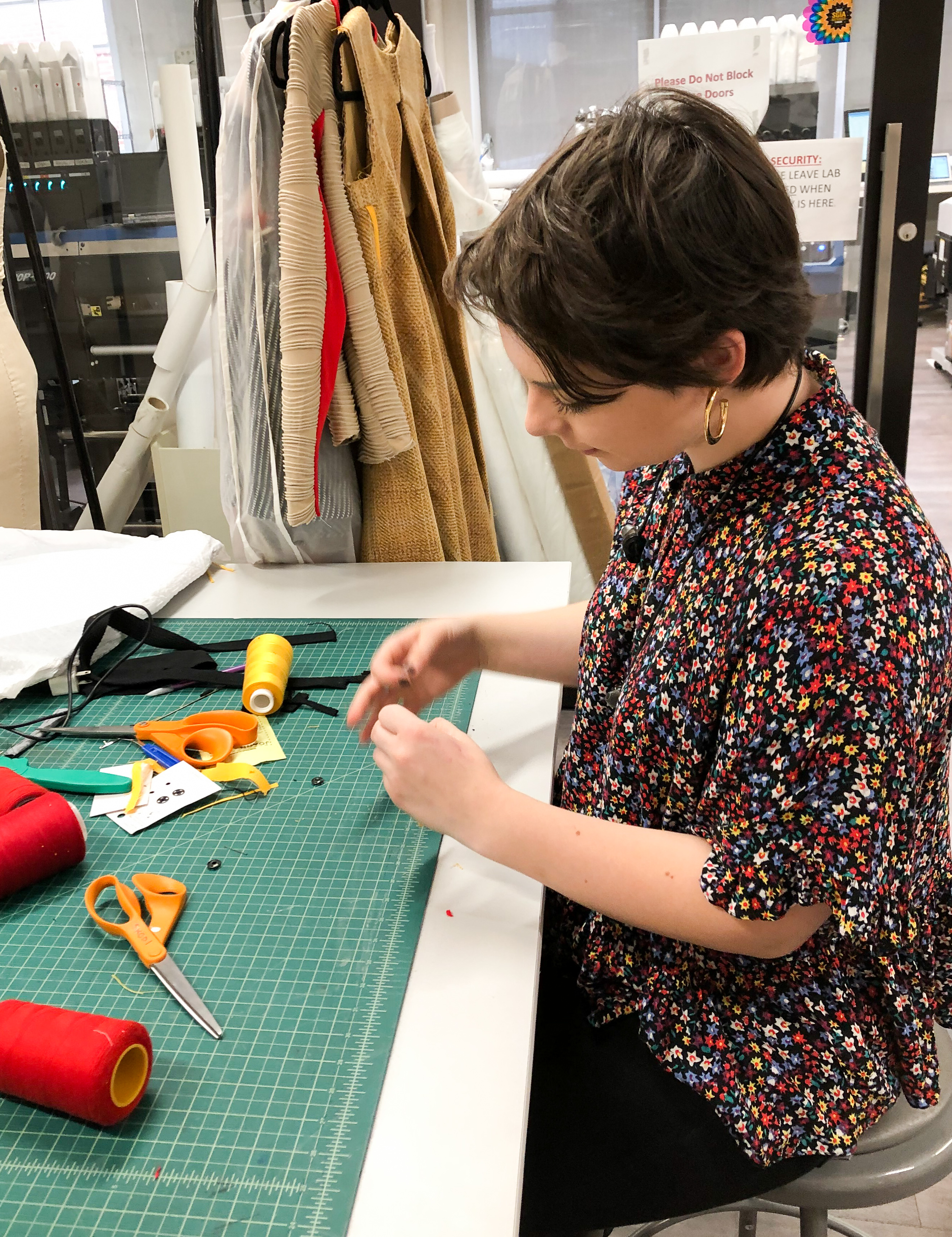


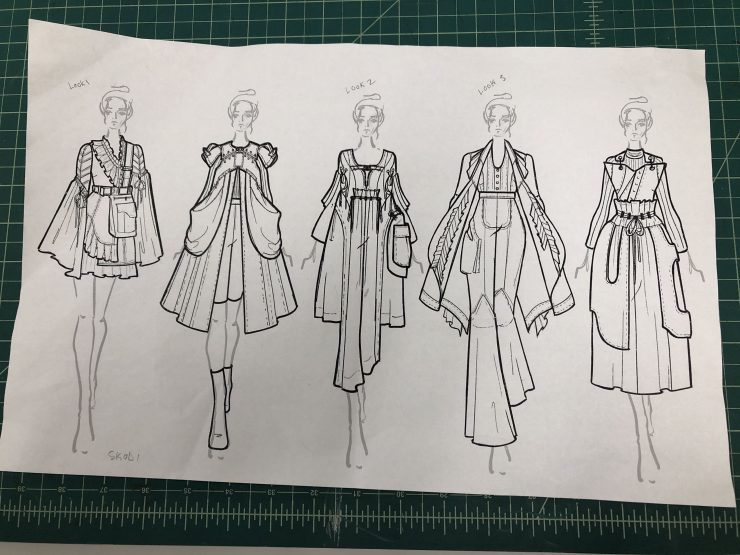
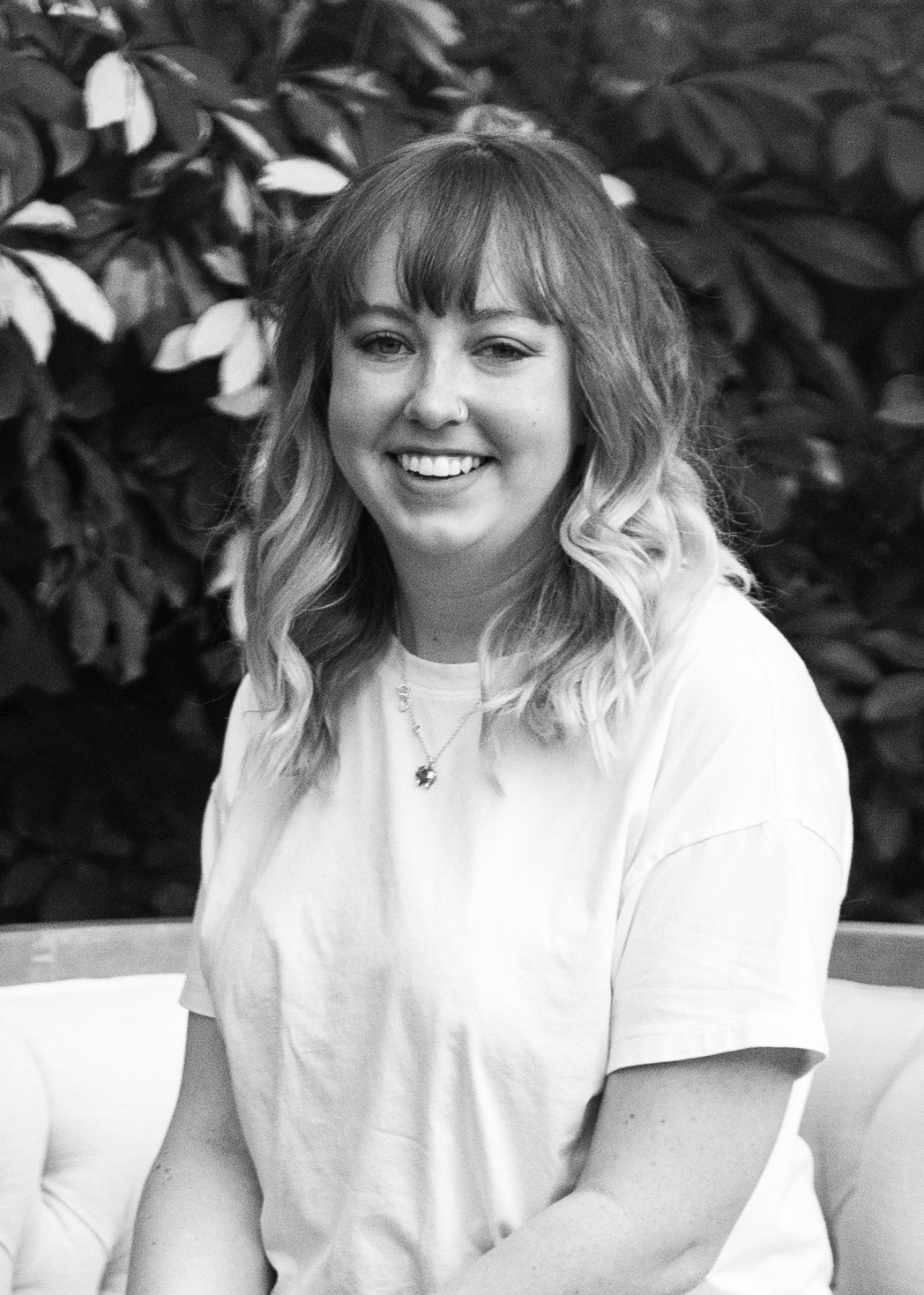

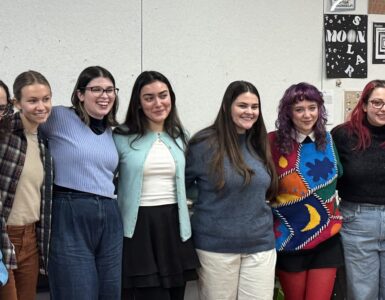
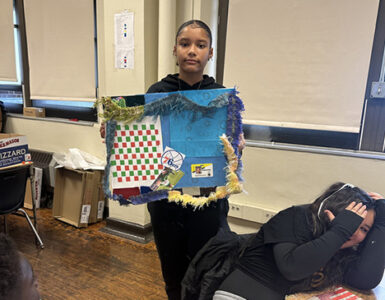

Add comment